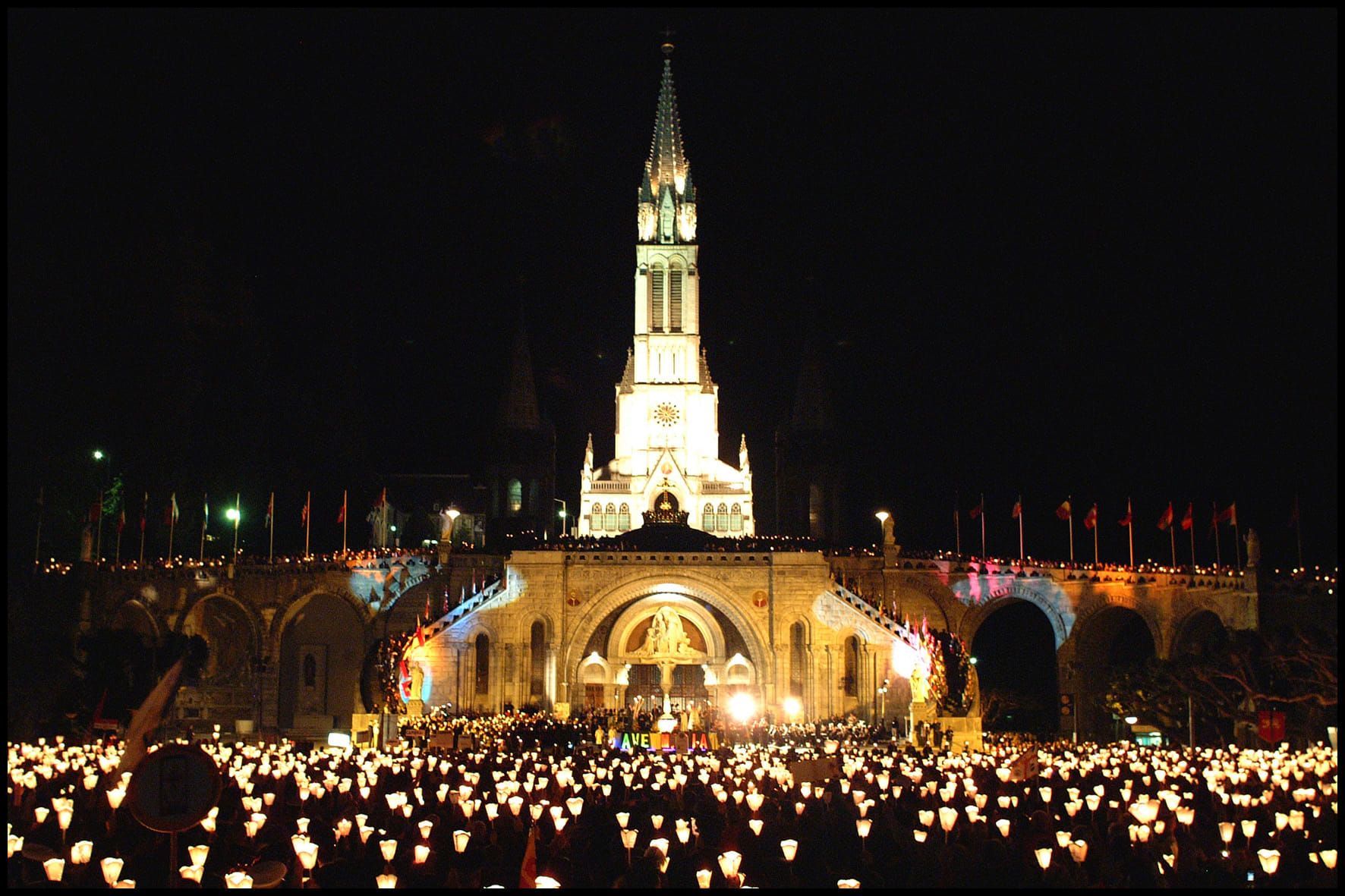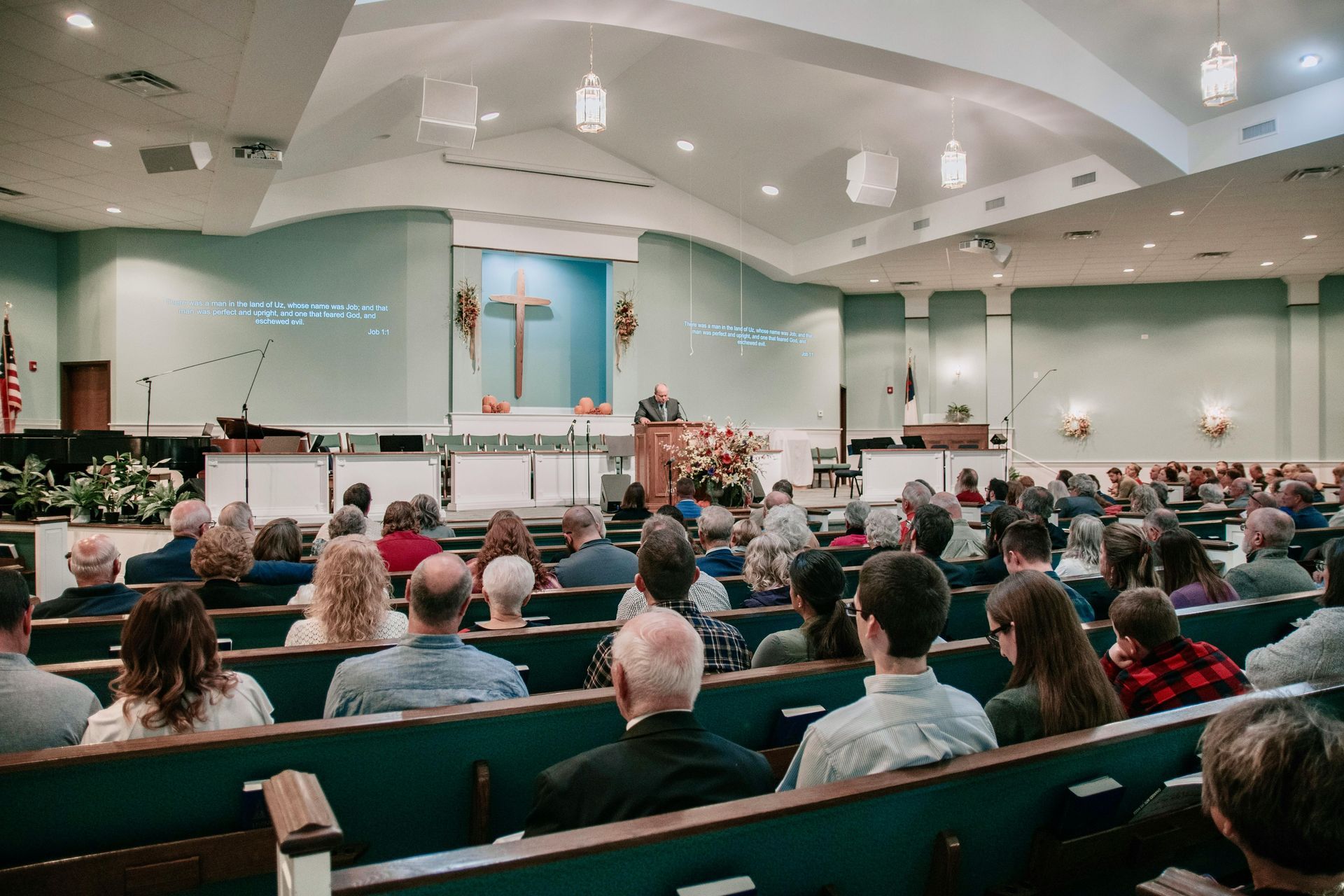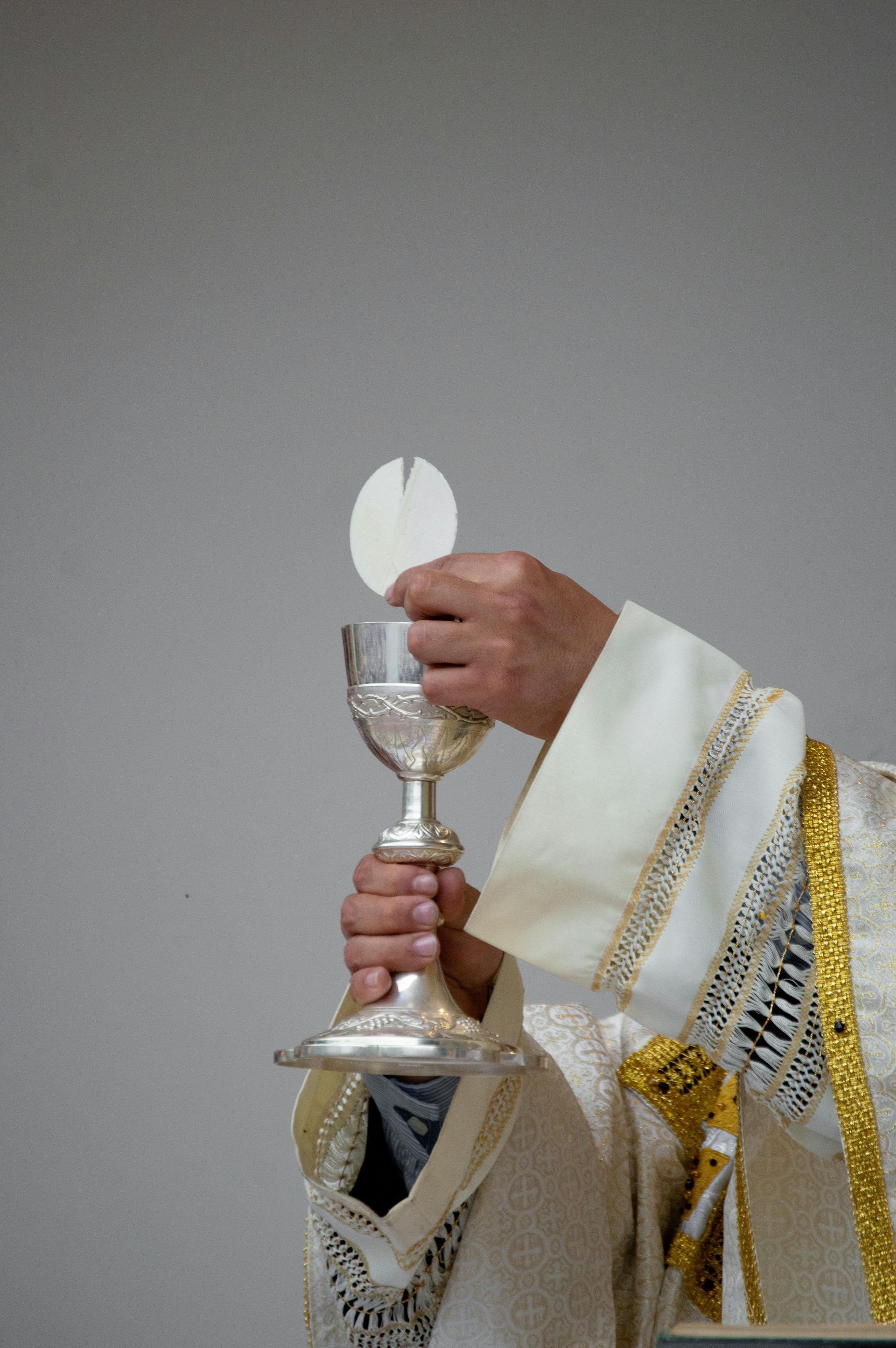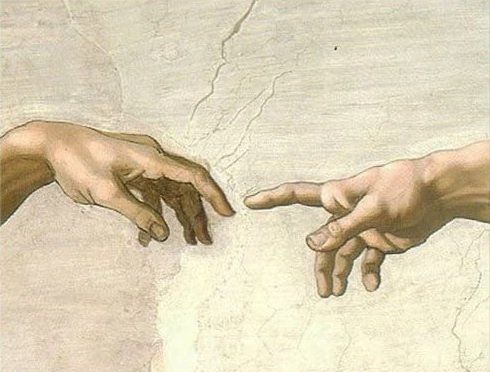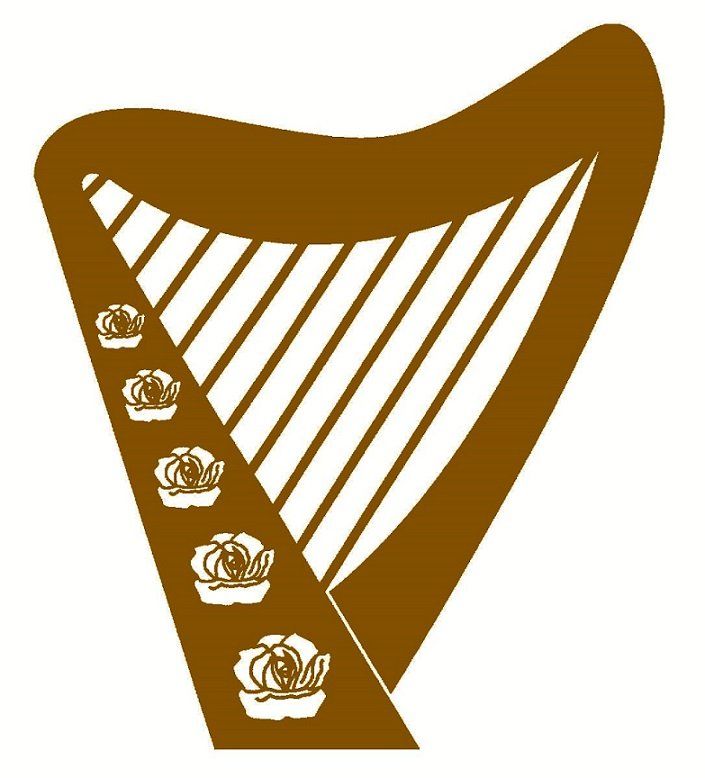St Mary Magdalene
"Apostle to the apostles"?
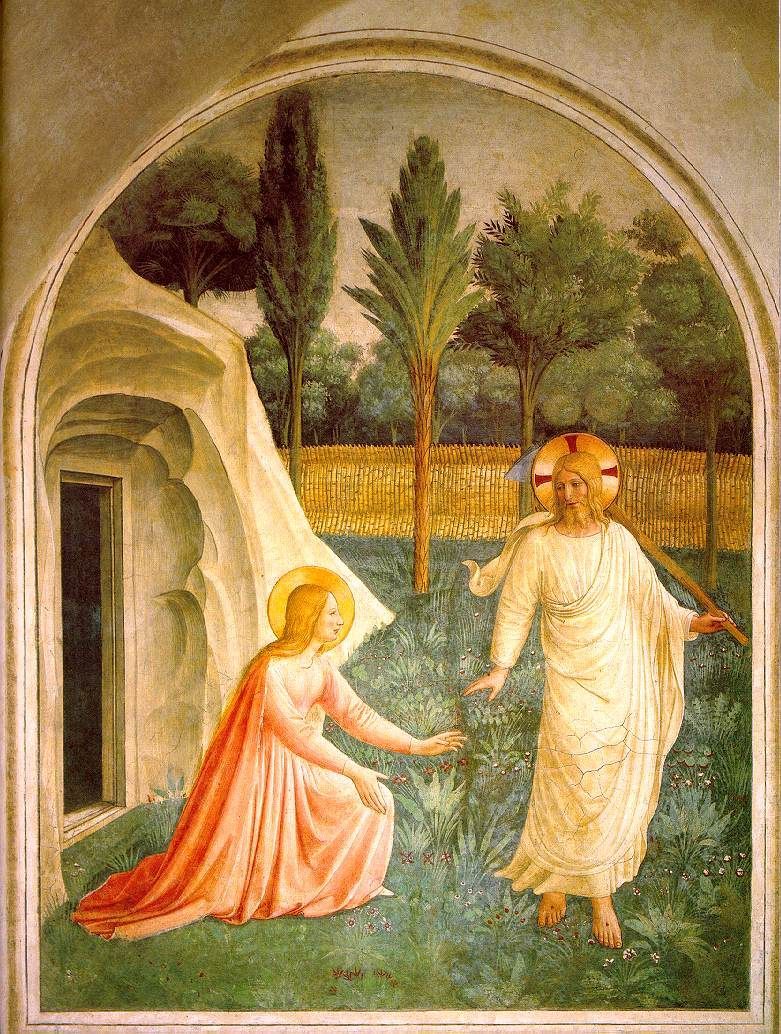
Noli me tangere, fresco by Fra Angelico (circa 1395–1455)
The title “Apostle to the apostles” given to Mary is meaningless. She wasn’t alone (“we don’t know . . .” John 20:2) and the title presumes she and the others had authority to go to Joseph’s tomb to carry out the burial rites. She had no authority.
Joseph and Nicodemus, along with John and Mary the mother of Jesus, carried out those rites on the Saturday evening when sabbath was over. Nicodemus brought myrrh and aloes (John 19:39) and the four of them did all that love and the law required. The final act was the wrapping of the cloths (‘othnia’) around Jesus’ body and the headband (‘sudarium’) around Jesus’ face and head.
Mary Magdalene went to the tomb to pray. The tomb was open and she saw the cloths lying flat on the ground. There was no body. She ran to tell Peter and John (John 2:1). They ran to the tomb, John arriving first. He saw the cloths but waited for Peter to enter the tomb. Peter noticed the cloths and face-band were separate (John 20:7-8) before John entered the tomb and “saw and he believed” (John 20:8). What did John see close up that he had not seen from outside? The othnia and sudarium were as he and the others had left them a few hours before, wound around the body, face and head. Jesus had passed through them, they had not been unwound. “He saw and he believed” (John 20:8) are amongst the most powerful words in the Bible.
Where is the shroud of Friday afternoon? The Shroud of Turin offers an unconvincing answer. Far sharper was the judgment of Professor Spadafora, senior lecturer in Scripture at Rome’s Lateran University, whose reply to that question was “It serves the piety of the faithful.” If the shroud of Turin inspires prayer it is doing good. By their prayer people create places of pilgrimage even when there are no authentic visions or events. Medjugorje and the shrine in honour of St Philomena are examples of other places which inspire prayer.
I studied Scripture under Professor Spadafora at the Lateran University. He was part of a group (Parente, Piolanti, Ottaviano and others) who drained the life from Pope Paul VI, separating him from new biblical scholarship and from the commission on birth control which Pope Paul VI himself had expanded from the original group set up by Pope John XXIII. That commission unanimously agreed that a ban on birth control could not be justified by reason, but four of them (Ford, Zalba, De Lestapis and Visser) wanted no change in Church teaching because that would admit the Holy Spirit had allowed error in such an important matter. Pope Paul followed the reasoning of the minority report, even repeating justifications unanimously rejected by the full commission, including the minority.
‘Humanae Vitae’ died on the day it was published. Around the world bishops’ conferences gave pastoral advice to their people, effectively guiding them to follow their consciences. They did. They do. We saw Pope Paul fade from us. He did not write another encyclical and the conservative-progressive tensions of Vatican II split loyalties everywhere.
The press conference to present ‘Humanae Vitae’ was introduced by Professor Lambruschini who taught me Pastoral Theology at the Lateran. His first words were “This is not an infallible statement.” The argument was over. If not infallible then open for discussion and therefore to the pastoral advice of bishops.
Moral theology works from principles which people accept or reject, but the principles do not change. Pastoral theology starts with the person and the truth that no one is outside God’s love and forgiveness. Moral and Pastoral theologies are two different disciplines but complement each other: without moral principles pastoral thinking might fall into situation ethics, and without pastoral awareness moral teaching might become an unbearable burden of perfection or failure, such as was loaded on the people by the Pharisees of Jesus’ time. We students at the Lateran University heard Vatican II reports at evening progressive press conferences and conservative lectures the following day at the university. It was a fascinating involvement.
A Vatican III now would serve no purpose. Vatican II is still moribund, stifled by Rome’s control in appointing bishops in the years following Vatican II. A synod that invites the people of God to be involved seems to be Pope Francis’ way of bypassing that control with his own blend of pastoral and moral and asking the people to come with him. Yet he seems doomed to failure. The millions of abused children and women have cried their suffering to church and world. We have heard. We acknowledge that the Church as it is cannot go on gospel mission. The dreadful abuses have not been addressed and it is the suffering of our children and women and others which is witness to our Catholic shame. As we support Pope Francis we sadly recognise the papacy has been our shame for most of Church history. Our first criminal pope was Callistus, twice imprisoned (embezzlement and public brawling but mitigating circumstances) and our first murderer was Damasus. Both are honoured as saints!
Pope Liberius died in September 366 and two of his deacons, Damasus and Ursinus, were determined to succeed him. They were thugs. Each hired gangs of assassins who fought in the streets of Rome. Damasus won and became pope in the October. Most of our popes were venal, stooges, puppets, under the control of powerful families. The papacy is a history of lust for power, wealth and sex. ‘The Donation of Constantine’ is part of this amazing story and the history of the Papal States is a tissue of deceit. When the Italian peoples longed for unity and wanted Rome as their capital in the 19th century, a brave Antonio Rosmini told Pius IX that the city and states should be given to the people of a united Italy. He suffered what those who speak truth to power suffer – exclusion. Rosmini’s ‘Five Wounds of the Church’ was placed on the Index of Forbidden Books.
Today, the good news of Jesus “love one another” is coming alive through our feeling more free with Pope Francis than we were with John Paul II and Benedict XVI. At the Good Friday Stations of the Cross at the Colosseum in Rome in 2005 the then Cardinal Ratzinger read these words: “What filth there is in the Church and even in the priesthood which ought to belong entirely to him”, quoted in ‘Light in the Darkness’, a full length interview given by Pope Benedict. The words were written by Pope John Paul II who died a few weeks later and he was followed by Pope Benedict XVI who resigned a few years later. Both men were defeated by the filth of the Church. They knew the truth. They failed us, the people of God, disastrously.
Pope Francis inherited the failures and has appealed to us, the people, directly. In only a small number of countries has the Church yet accepted independent commissions of enquiry into sexual abuse of children and women. There have been none in Africa or Asia, nor in Central or South America except for the extraordinary one in Chile where the details of Archbishop Scicluna’s huge report were so damning that the whole hierarchy offered to resign. Pope Francis and Archbishop Scicluna know the details and owe us the truth. We are left in the ignorance of guessing. We guess the worst. Italy, Spain and Portugal have recently and reluctantly begun enquiries, terrified by what has been revealed in France. What did Benedict discover in Cuba?
We are aware of new emphasis on our sharing in the priesthood of Christ by our baptism, women and men equally, the mother of Jesus and Mary Magdalene inspiring a fresh understanding in this primacy. Given that, it is suggested that women do not need a place in the ministerial priesthood. Is that true, is that true equality?
In a beautiful Maundy Thursday meditation Pope John Paul II imagined the Last Supper. The apostles are there, though
only seven are mentioned by name in the four gospel accounts, and so are their families. At least six of Jesus’ apostles were his relatives, their parents his aunts and uncles. Jesus’ mother is next to him. Jesus gives her the sacrament of his body and Pope John Paul II imagines Jesus’ thoughts reflecting his beautiful words at Cana: “Woman, chosen for me by my father, awaited down the ages by our people to be the mother of the Messiah, you gave me my human body: I give you my sacramental body.” When Mary held her baby did she ever think “This is my body”?
I return to the four accounts of the Resurrection. They cannot be fitted together to make one. We have to know all four or we speak nonsense, this year’s gospel story, rather than offer the four different accounts to the people and students. It is also unbalanced to concentrate on one account and then dramatise an empty title like ‘Mary Magdalene, apostle to the apostles.’
None of this is new. I knew it in the early 1970’s from the excellent Liturgical Press of Collegeville in the United States. It discussed the Friday afternoon shroud and the Sunday morning cloths and saw how to reconcile the two. The true witness to the resurrection in John is that the othnia and sudarium were still in the shape of Jesus’ body, but only John would recognise that. Jesus had passed through the cloths. “He saw and he believed” (John 20:8).
John is the apostle to the apostles, the first witness to the resurrection, not Mary Magdalene. Mary came to the tomb to pray, saw the tomb was open, saw the cloths lying flat and the body not there. She ran to tell Peter and John and returned to the tomb after they had gone. Jesus was waiting for her and Mary mistook someone early in the garden as a gardener. He spoke her name (was it the name on the white stone – Book of Revelation 2:17?) and it was then she recognised him. “Noli mi tangere” (“Do not touch me”) is John’s telling us of Mary’s being overwhelmed.
John was on his way to tell the other apostles but we would assume he went first to his two mothers, his own and her sister, his new mother, who would be talking about the Saturday evening and its sadness. They surely had to be first to know. Then he would tell the other apostles.
We need better understanding of women’s place in the story of Gospel and Church and women are capable of speaking for themselves, equal in scholarship and sensitivity to the partnership: “Let us make humankind in our own image and likeness” (Genesis 1:27). Male and female we were created – together we are God’s stewards of creation.
John Daley IC
March 2023
